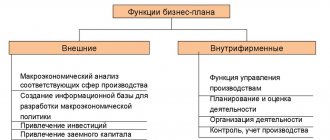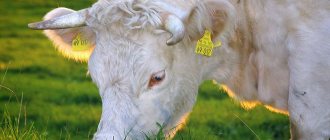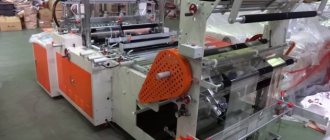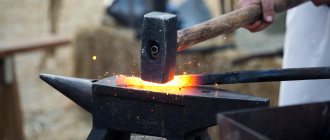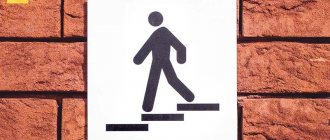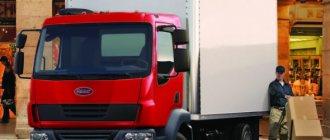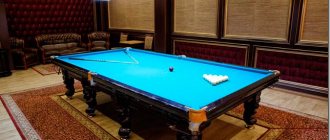The production of plastic bags cannot be called a revolutionary or even a new idea. However, for many years this type of small business has not lost its relevance, and, with a competent approach, perseverance and small investments, it can generate constant income.
Plastic bags are used constantly in everyday life. First of all, as packaging material, for carrying purchases, for garbage. The low price determined the great popularity and distribution of packages among consumers. Plastic bags are widely used in advertising - printing logos and advertising offers is an effective marketing ploy.
To start the production of polyethylene products, a production line is required, including several industrial plants, a production facility and personnel.
To draw up a business plan for a small production, it is not advisable to use the services of consulting companies. You can create a workable business plan yourself, based on the useful information presented below and on standard templates.
Equipment for making bags
Polyethylene film is produced by extruding molten polyethylene through holes. The raw material is high- or low-density polyethylene in the form of granules up to 5 millimeters; its manufacturers are easy to find in Russia. The basis for creating a full-cycle production of plastic bags is an extrusion machine - an extruder.
There are many models and ready-made technological lines for the production of bags on the market today. The main line manufacturers are China, the Republic of Korea and Türkiye. Brands you should focus on are GURIS MAKINA, HYPLAS, MINGDE MACHINERY COMPANY. A photographic (flexographic) machine using elastic inks will significantly expand the attractiveness of your products.
The workshop premises must meet certain requirements. An extruder is a fairly large machine; in practice, you may have to deal with equipment up to 6 meters high. Accordingly, the room must have fairly high ceilings. Also, the workshop should be well heated, there should not be high humidity or dust, and good ventilation should be taken care of. Failure to take proper measures will affect the quality of the final product. There are no special sanitary requirements for the workshop premises; all that is required is to install communications and ensure the working conditions required by law for workers.
For our work, we rent production space in an industrial zone, since the production of plastic bags is an environmentally harmful business. For our production, 150 sq.m. is enough. meters, rent 600 rubles/month. Commissioning work should be ordered from equipment suppliers. They usually conduct preliminary training for staff. In addition to the extruder, we purchase a flexo printing machine (for printing pictures, logos), a bag-making machine with a built-in die-cutting press, and a granulator for granulating waste. For calculations, we accept the cost of purchased equipment in the amount of 3.5 million rubles. The productivity of our equipment is 50 kg/hour.
The mentioned flexographic machine for applying high-quality full-color images also costs a lot of money. It must be said that if there is a lack of financial resources to purchase such additional equipment, the application of drawings can be ordered from third-party companies. This service is not very expensive.
Rental of premises and equipment
For such production there is no need to rent premises in the city center. A production workshop or a former warehouse outside the city is quite suitable. In general, the ideal option would be to rent a premises that previously housed a workshop for the production of polyethylene materials.
Select a room based on the following parameters:
- area - about 300 square meters, approximately half will be allocated to the production workshop;
- the following must be supplied: electricity, water, sewerage, heating, ventilation;
- the premises should have separate rooms for meals, staff rest, and offices for administration;
- bathroom and showers for staff.
Separate from the production workshop there should be a room for finished products. When choosing a premises, make sure that there are convenient access roads for large vehicles that will bring consumables and pick up finished products. There should also be public transport nearby, since most of your employees are unlikely to drive a personal car to work.
Equipment you will need:
- extruder;
- press;
- seam sealing machine;
- flexo printing device;
- bag forming machine.
In addition to the basic equipment for the workshop, you will also need:
- office furniture for administrative offices;
- equipment: PC, printer, or better yet MFP;
- furniture for the staff rest room. There is also a refrigerator, a kettle, a microwave oven, and perhaps a minimal set of dishes.
Workers will need uniforms, gloves, and work supplies.
Personnel you will need:
- machine operators;
- movers;
- driver for the loader, as well as separately for transport operations;
- storekeeper;
- technologist;
- general workers;
- purchasing and sales managers;
- accountant;
- cleaner of industrial and administrative premises. If the salary fund and workload allow, you can hire two people - separately for cleaning workshops, separately for offices.
It would be a good idea to install a video surveillance system throughout the entire production, as well as a security system.
Costs for starting production, cost and estimated profit
We will calculate the business for the production of a T-shirt bag, size 30*40. We assume that from 50 kg of film we will get 8200 bags. If we calculate the approximate weight of the package, then from 50 kg of film we get about 8800 pieces of packages; in our calculations, we decided to include the difference as losses due to defects. You yourself will learn about the amount of losses from equipment sellers and market professionals and will understand when you set up equipment for production. For calculation, we take this indicator and thus get 8200 * 8 = 65600 pieces per shift or 1,443,200 pieces per month.
For the production of polyethylene film, first grade polymer granules are used. Two types of raw materials are used in production - low- and high-density polyethylene. For our calculation we will use the material - high-density polyethylene GOST 16337-77 for food packaging. The cost of 1 kg of LDPE for calculation is 82 rubles.
In addition to the initiator of the IP project, two employees will work at our production. The salary will be 40,000 rubles per month. Accounting is outsourced, the cost per month is 7,000 rubles.
Additional investments in production. To launch a workshop for the production of plastic bags, you will need a production certificate, permits from the local administration, SES, and firefighters. In addition, if you are going to produce food film, then you need to read GOST 10354-82.
For our calculations, we assume that the cost of certification and opening an individual entrepreneur costs 40,000 rubles.
Let us present the obtained data in tabular form.
- The initial investment for opening the production of bags will be:
Table 1. Investments for opening
| Total | |
| 1 year | |
| Purchase of equipment | 3500000 |
| Working capital | 0 |
| Organizational expenses | 40000 |
| Total expenses | 3540000 |
- As we mentioned earlier, there will be 2 workers on staff; we will calculate the wage fund and the amount of tax deductions.
Table 2. Staffing, payroll, taxes.
| Job title | Qty | Salary | Total |
| Human | rub/month | Payroll | |
| Worker | 2 | 20000 | 40000 |
| TOTAL | 2 | 20000 | 40000 |
| Total | |
| year | |
| Worker | 480000 |
| TOTAL PAYROLL | 480000 |
| TOTAL TAXES | 144000 |
- When calculating revenue, we focus on the productivity of our equipment and the constant sales of finished products; the final figures are as follows.
Table 3. Calculation of revenue from the sale of packages
| Total | Total | |
| 1 year | 2 year | |
| Revenue from package sales | 12700160 | 13854720 |
| Total revenue | 12700160 | 13854720 |
- After calculating your fixed and variable expenses in detail, you get the following table.
Table 4. List of expenses
| Total | Total | |
| 1 year | 2 year | |
| Fixed expenses | ||
| Wage | 440000 | 480000 |
| Payroll taxes | 132000 | 144000 |
| Rent | 990000 | 1080000 |
| Depreciation | 3500000 | 0 |
| Accountant services | 70000 | 84000 |
| Variable expenses | ||
| Polymer | 7937600 | 8659200 |
| Communal expenses | 176000 | 192000 |
| Transport | 66000 | 72000 |
| 55000 | 60000 | |
| Insurance individual entrepreneurs | 147155 | 158701 |
| Other variable expenses | 50000 | 60000 |
| Total costs | 13563755 | 10989901 |
- Once we have revenue, inventory and cost volume, we can calculate the net profit of production.
Table 5. Calculation of profit of polyethylene production.
| Total | Total | |
| 1 year | 2 year | |
| Enterprise revenue | 12700160 | 13854720 |
| Production cost | 13563755 | 10989901 |
| Gross profit | -863595 | 2864819 |
| Loan interest | 0 | 0 |
| Profit before tax | -863595 | 2864819 |
| Taxes | 127002 | 138547 |
| Net profit | -990597 | 2726272 |
| Net profit with cumulative total | -990597 | 1735676 |
- We will make a cash flow forecast for the most important items of our business.
Table 6. Cash flow
| Total | Total | |
| 1 year | 2 year | |
| Income from core activities | 12700160 | 13854720 |
| Operating expenses | 10190757 | 11128448 |
| Wage | 440000 | 480000 |
| Taxes from payroll | 132000 | 144000 |
| Accountant services | 70000 | 84000 |
| Rent | 990000 | 1080000 |
| Rubber crumbs | 7937600 | 8659200 |
| Communal expenses | 176000 | 192000 |
| Transport | 66000 | 72000 |
| 55000 | 60000 | |
| Insurance individual entrepreneurs | 147154,93 | 158700,53 |
| Other variable expenses | 50000 | 60000 |
| Taxes on revenue | 127002 | 138547,20 |
| Payment of interest on the loan | 0 | 0 |
| Cash from core activities | 2509403,47 | 2726272,27 |
| Income from investment activities | 3540000 | 0 |
| Working capital | 0 | 0 |
| Expenses for investment activities | 3540000 | 0 |
| Purchase of equipment | 3500000 | 0 |
| Organizational expenses | 40000 | 0 |
| Cash from investment activities. | 0 | 0 |
| Receipts from financial activities | 0 | 0 |
| Expense for financial activities | 0 | 0 |
| Repayment of the loan amount | 0 | 0 |
| Cash from financial activities | 0 | 0 |
| Cash balance at the end of the year | 2509403 | 2726272 |
- The final stage is to clearly see the payback period of our initial investments and the profitability of production.
Table 7. Final calculation.
| Planning horizon | 2 years | |
| Enterprise revenue, rub. | 26554880 | |
| Enterprise profit, rub. | 1735675,7 | |
| Investments in the project, rub. | 3540000 | |
| Payback period, months | 17 | |
| Profitability,% | 6,5 | |
Strategy: mini-shop or full cycle?
Is it possible to build a profitable enterprise with minimal start-up capital?
To answer this question, let's conduct a brief comparative analysis:
| Comparison criteria | Mini workshop | Full cycle workshop |
| Equipment cost (RUB) | from 250,000 | from 3,000,000 |
| Equipment dimensions (mm) | from 3000x1800x1800 | from 8000x4500x5000 |
| Basic raw materials | Ready-made PET film | PET granules |
| Finished product | PET package (1-2 types) | PET film, assorted bags |
| Performance (packets) | from 5,000 pcs/hour | from 5,000 pcs/hour |
| Cost (packages) | from 0.25 rub. | from 0.13 rub. |
The table shows the average parameters. Setting up a full-cycle workshop will require 10 times more money and effort than launching a mini-line. But these costs will pay off faster: the cost of production is twice as high, the range is wider.
The first option (for example, a mini-workshop for the production of garbage bags) will become a profitable business if three conditions are met:
- A profitable contract for the sale of products has been concluded.
- An agreement was signed for high-quality raw materials at a low price.
- Costs for delivery and maintenance of the workshop are minimal.
At the same time, the second option, based on the complete processing of raw materials into film and then into bags, may not bring the expected income, but losses. The reason will be the refusal of the wholesaler to cooperate, an increase in prices for raw materials or other commercial risk.
Having invested a large sum in development, you need to be prepared for both high profits and large losses. The result of any undertaking depends on the specific conditions of doing business, agreements with partners, the market situation and the managerial competence of the owner.
Watch the workshop in action in video format:
Technology for the production of plastic bags.
The technology for producing bags is quite simple and can be understood by any literate person. There are several technological steps:
— polymer granules are loaded into the extruder hopper, where they are melted into a homogeneous mass and a polyethylene film in the form of a sleeve is formed. At this stage, the machine performs folding, cutting and winding into rolls;
— next comes printing of images and inscriptions and again winding into rolls;
— then the roll goes into a bag-making machine, we form a model of the bag and select the bottom fold;
- cutting, sealing;
— forming handles and placing them in packs of 100 pieces.
The most primitive technology is cutting simple bags for packaging from ready-made polyethylene sleeves. Equipment for such a business (cutting soldering machine) has the lowest price - about 250 thousand rubles per machine, semi-automatic machines are even cheaper. You just need to find suppliers of semi-finished products. In our calculations we will consider the full production cycle of bags. Although the initial investment in this business is greater, the profit is also greater; this enterprise can also become a supplier of film for cutting bags.
Market analysis
Based on the market analysis carried out, the foundations of the company’s marketing strategy are formed, from which, ultimately, all other components of the business plan of a company engaged in the production of plastic bags .
Key factors for the success of the designed business in a competitive environment:
- full production cycle, using modern equipment, environmentally friendly and energy-saving technologies;
- a wide range of goods for individuals and enterprises;
- competent pricing policy;
- special terms of payment and delivery for key customers;
- logistically good location.
You may also be interested in a business plan for the production of stretch film. Stretch strips are used in many areas of production and packaging of goods, etc.
Types of production of polyethylene products, markets, clients and competitors
The versatility and attractiveness of this type of business is explained by its flexibility and versatility - on one production line you can make plastic bags of various sizes and purposes. The color of the base of the bags is determined by the color of the polyethylene raw material. The more types and directions of production you choose, the higher the costs and the higher the turnover with profit.
- T-shirt package, assorted.
- Banana rolls.
- Production of standard size plastic bags for food packaging.
- Making garbage bags.
- Production of advertising packages with logos and commercial offers.
- Construction waterproofing.
- Material for greenhouses and greenhouses.
The marketing of finished products must be approached very responsibly. When launching a large production line, sales should be entrusted to professionals. Small businesses in this area rely on partners and similar medium and small entrepreneurs. Potential clients are not only shops and shopping centers, but also small/medium manufacturers and franchisors in your region who use polyethylene for product packaging in their work. Offer them “branded” packaging, don’t forget that every owner of a chain of pirozhki and cheburechki dreams of conquering the world and becoming the second McDonald’s.
Despite the seeming fullness of the market, experts note its stable growth. The number of market participants is also growing - by several percent per year (in the Central region up to 4% per year). In one area, 5-10 competing manufacturers operate quite successfully. The presence in the regions of large enterprises that produce various products from polyethylene will not prevent the prosperity of small workshops.
Relevance of the business idea
Bags are used almost everywhere: production, catering, shopping centers, small shops, etc., etc. Even most of us have a bag of bags at home.
Russia ranks third in the world in terms of the number of plastic bags used. The need for such packaging material is growing, which means your products, if they are of the proper quality, will not be left without consumers.
We found out: the production of good bags is a relevant idea, it can bring good income. What do I need to do? Establish high-quality production and provide a high-quality product at an adequate price.
Risks and possible problems
This type of business is one that pays off quickly, but there are also certain risks. Plastic bags cause enormous harm to the environment. In many countries, governments and parliaments, under pressure from the “greens,” have adopted special bills either completely prohibiting their use and production (Italy, Taiwan, Bangladesh, some states of the USA, Australia, India, in Tanzania, the production of polyethylene bags is a criminal offense), or are introducing special taxes on packages. Even the introduction of a tax leads to a reduction in the consumption of packages by 90-95%.
Manufacturers of plastic bags in Russia are not yet limited in any way. Of course, it is impossible to say for sure when prohibitive measures will be taken in our country, but it is very likely that restrictions will inevitably be introduced.
Financial calculations
Profitability and profit margin will depend on the capacity of the equipment and the amount of operating expenses. When making calculations, differences in financial indicators in each region should be taken into account. In addition to the raw materials used, the cost of bags is influenced by the following factors:
- size;
- material density;
- the presence of a bend in the film at the bottom of the product (bottom fold);
- degree of handle strengthening;
- design and form;
- printing features (color, number of shades, image area).
It follows from this that the cost of producing bags must be calculated for a specific order.
Investments in the project
To start production you will need start-up capital, consisting of the following expenses:
- rent of space – 45,000;
- registration of activities – 20,000;
- sanitary examination and certification – 21,000;
- purchase and installation of equipment – 4,000,000;
- purchase of the first batch of raw materials – 200,000;
- advertising campaign – 35,000;
- business expenses - 20,000.
The total investment amount will be 4,341,000 rubles.
Current expenses
In order for the company to function smoothly, you will need to make monthly expenses:
- rent – 45,000;
- staff salary – 250,000;
- utility bills - 25,000;
- advertising – 10,000;
- payment for raw materials – 200,000;
- unforeseen expenses - 15,000.
The amount of variable expenses will be 545,000 rubles.
Income
The company will operate according to the standard schedule:
- working day duration – 8 hours;
- working week – 5 days.
In 1 hour, the production line will be able to produce 35 kg of film, respectively, in one work shift - 280 kg, and per month - 6,160 kg (280x22). Since 1 kg of film corresponds to 200 bags, 1,232,000 pieces will be produced per month. With an average price of one product of 2 rubles, the amount of monthly revenue will be 2,464,000 rubles.
Enterprise profit
Tax amount at a rate of 6% of income:
2,464,000 x 0.06 = 147,840 rubles.
Net profit of the enterprise:
2,464,000 – 147,840 – 545,000 = 1,771,160 rubles.
Profitability is calculated as follows:
1 771 160 /2 464 000 = 71,8%.
From the calculations it follows that the payback period of the project is less than a year. It should be taken into account that at first the enterprise will not be able to sell all its products due to poorly established sales channels.
Choosing a strategy and legal registration of business
When starting the production of plastic bags, you can go in two ways:
- full cycle production (from film production to production of bags of any configuration);
- partial production (from purchasing finished film, applying images, cutting into shapes with subsequent soldering).
Let's consider the full cycle as a more promising type of business. Although such an enterprise will require more capital investments, sales opportunities, versatility of the products produced and, accordingly, profitability will be significantly higher. In addition, such an enterprise can become the same supplier of finished film for incomplete cycle production.
Possibility of using the finished film:
- universal packaging material,
- construction waterproofing,
- material for greenhouses, greenhouses and other needs of the agricultural sector,
- protection from pollution during construction or repair work.
The optimal organizational form for the production of polyethylene products is a legal entity on a simplified taxation system.
When registering an enterprise, you must indicate the following OKVED codes:
- 25.2 — Production of plastic products
- 25.22 — Production of plastic products for packaging
- 51.47 — Wholesale trade of other non-food consumer goods.
To start a workshop, you will need a production certificate, permits obtained from the local administration, the sanitary-epidemiological and environmental service, energy supervision, and fire protection. The production of film for plastic bags must comply with GOST 10354-82 (certification of cling film is required to be confirmed every 3 months) . But in order to obtain such a certificate, the production line (of course, after receiving all production permits), and the resulting samples must be provided for an expert opinion.
Spunbond
Spunbond is a non-woven material made from a polymer melt, made by spunbonding (pressing technology at high temperatures).
Spunbond bags are an excellent replacement for plastic bags. They are used at exhibitions and presentations during promotions and conferences, as well as in clothing stores and souvenir shops. Gift sets packed in spunbond bags have an attractive appearance.
Bags and packages made of spunbond are environmentally friendly, tear-resistant, abrasion-resistant, lightweight, because... the material has a low density, is easy to paint, and can withstand weight up to 15 kg.
BOPP film
BOPP film is a biaxially oriented polypropylene film. BOPP bags are made of high-strength polypropylene, reliably protect the products contained in it from loss of presentation, and attract the attention of buyers with a pleasant glossy shine.
BOPP film has the maximum degree of transparency among all types of polymer film, due to which the packaged product is easy to see. The material is resistant to high temperatures.
Production is carried out from primary raw materials, which guarantees safe contact with food for human health.
A biodegradable bag is a plastic biobag with a biodegradable additive; after use, it decomposes in 1.5-2 years under the influence of oxygen, water and light and turns into organic compounds without harming the environment.
Externally, biodegradable bags look the same as regular plastic bags. When printing a logo on a bag, we recommend placing information that it is biodegradable, which will increase customer loyalty to your brand.
What are biodegradable bags?
World pollution is one of the pressing problems of the current generation. The leap in technology over the last couple of hundred years has negatively impacted all aspects of nature's existence. If in the 19th century this issue was not on the agenda at all, then the realities of 2020 are the opposite. The world strives to minimize the destructive impact of humans on the environment, and biodegradable bags are one of the methods to achieve the desired.
Biodegradable bag with the inscription - I am not plastic
Every year, about 5 trillion plastic bags are produced around the world. Only 3% is disposed of correctly, and the rest is sent into the ground for 700+ years through garbage cans.
| Benefits of biodegradable packaging | Product Disadvantages |
| The composition does not contain compounds dangerous to the body, which does not kill flora and fauna + does not directly harm humans. | The raw materials for the production of biodegradable bags will cost several times more than the basic set of materials. This point may initially scare off buyers, because the environment is the last thing the average consumer thinks about. |
| High level of resistance to peak temperatures and temperature changes. Dishes and containers made from biodegradable materials can be used in microwave ovens and refrigerators. | |
| Duration of service life. Despite the composition, the quality of the material can give odds to many competitors made from pure polyethylene. | The high cost of starting a business from scratch. The main problem is to find high-quality and inexpensive equipment. The use of used units is acceptable only in small-scale production. |
| Low throughput of liquid substances. The property follows from the analogy with classic plastic containers. |
In European countries, the transition to biobags began 10 years ago, and now the share of quickly degradable containers is increasing annually by 3%-5%. In Russia, it is more difficult to buy biodegradable starch bags, but large chains are also smoothly switching to a similar product, and this is good news. The table below will tell you about the classification of biodegradable containers.
| Type | Peculiarities | Popularity (out of 5 ★) |
| Hydro packages | Grocery and garbage bags made of starch with minimal decomposition time - just a couple of minutes. A distinctive feature of such containers is their interaction with water. When moisture gets on the surface of the package, the starch begins to decompose, so it will not be possible to use the container for transporting wet goods. The maximum permissible load capacity does not exceed 3 kilograms. | ★★★★ |
| Oxo-bio bags | Here is a more classic version of a plastic bag with a special coating. The solution is applied at the final stage of production. The rate of decomposition of such containers does not exceed 2 years. Is the base material used for manufacturing GDL/GYL? Polypropylene or polystyrene. | ★★★★★ |
| Polylactide | The bags have the same set of properties as classic plastic T-shirts. The decomposition period of the products does not exceed 2 months. In terms of production – minimal emissions into the atmosphere + use of renewable sources of raw materials. | ★★★ |
Many sellers complain about the lack of evidence of the environmental friendliness of biobags, but if we dig deeper, we get banal cost savings. There are a lot of certificates and official opinions on the quality of such products.



